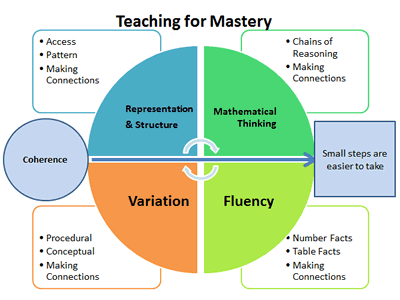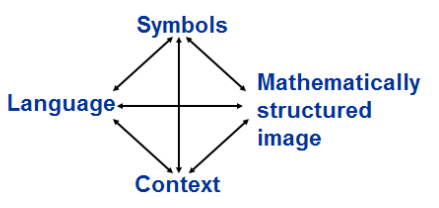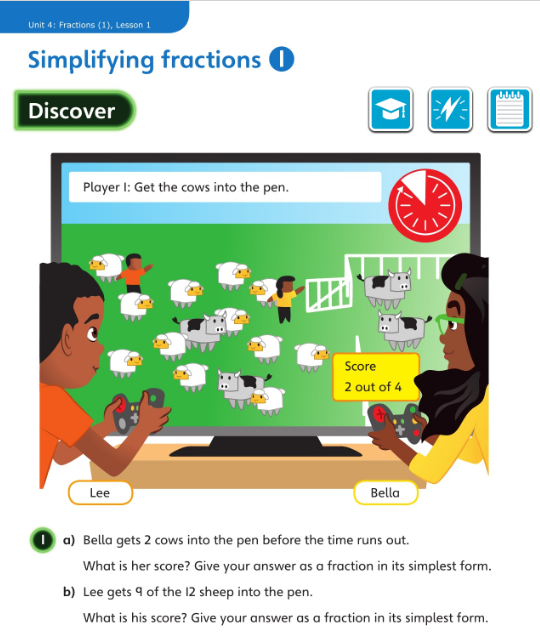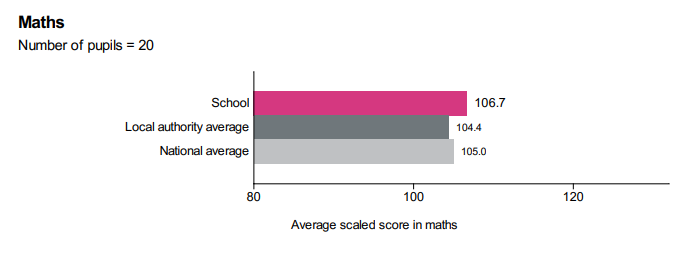The intention of teaching for mastery is to give all children access to equitable classrooms; classrooms where they can all participate and be influential, and classrooms where they are encouraged and supported to develop a deep connected and sustained understanding of the mathematics being explored. (Jurassic Maths Hub – ‘Teaching for Mastery’ Statement)
Our curriculum for mathematics aims to ensure that all pupils:
Mathematics is an interconnected subject in which pupils need to be able to move fluently between representations of mathematical ideas. Our curriculum overview, by necessity, is organised into apparently distinct domains, but pupils should make rich connections across mathematical ideas to develop fluency, mathematical reasoning and competence in solving increasingly sophisticated problems. They should also apply their mathematical knowledge to science and other subjects. Pupils who grasp concepts rapidly will be challenged through being offered rich and sophisticated problems before any acceleration through new content. Those who are not sufficiently fluent with earlier material will be offered opportunities to consolidate their understanding, before moving on.
Mathematical subject knowledge and conceptual understanding
Our curriculum overview describes a sequence of knowledge and concepts that also incorporates the 5 Big Ideas of Teaching for Mastery, namely ‘Mathematical Thinking’, ‘Variation’, ‘Fluency’, ‘Representation and Structure’ and ‘Coherence’. To develop pupils’ reasoning and deeper conceptual understanding, problems are usually set in real life contexts. Carefully chosen representations (manipulatives and images) are available for the children to explore concepts and understand them in more depth. These representations may appear in books as children show their understanding, rather than answers to a series of calculations. For example, the use of practical ‘Concrete’ resources may be photographed, ‘Pictorial’ representations may be drawn (such as Base 10) along with their numerical recording in the ‘Abstract’. This is referred to as ‘Concrete – Pictorial –Abstract’ (CPA) approach.
While it is important that pupils make progress, we believe that they need to ‘master’ the key concepts by acquiring a deep, long-term, secure and adaptable understanding of the subject. Pupils are taken on a coherent journey through the mathematics and our planning of ‘small steps’ supports the design of lessons which allows us to take all of our children to an end learning point by a progression of small, incremental steps.

Spoken language
We believe in the importance of spoken language in pupils’ development across the whole curriculum – cognitively, socially and linguistically. We also believe that the quality and variety of language that pupils hear and speak are key factors in developing their mathematical vocabulary and presenting a mathematical justification, argument or proof. We will support them to make their thinking clear to themselves as well as others and ensure that pupils build secure foundations by using discussion and questioning to probe and remedy their misconceptions.
Promoting our school motto and The Carey Qualities
Our curriculum encourages children to see the mathematics that surrounds them every day by providing real-life contexts that are meaningful to them both inside the classroom and the outside environment. We provide opportunities for children to challenge themselves to ‘Aim High’ as well as supporting them to ‘Be Resilient’ and keep going when they get stuck on a problem or calculation. We ‘Take care of each other’ by nurturing pupils’ confidence, being supportive and fostering a sense of curiosity about the subject. Children will also have the opportunity to ‘Be Resourceful’ and use the manipulatives available to support their conceptual understanding of the structure of the mathematical concepts.
At the Carey Federation we follow the progression sequence for Key Stage 1 and 2 as set out in the Programmes of Study of the National Curriculum (Department for Education, 2013), including the new EYFS framework (Department for Education, 2021).
Both of the schools in our Federation are organised into mixed-age or whole Key Stage classes. Although we have subscribed to the Power Maths resources in 2018, because of the nature of teaching different year groups in one class, in order to support children’s learning of mathematics, teachers use various resources and elements from the following:
We therefore do not follow one particular scheme of work on an everyday basis, so you will see a mixture of resources being used across the school which teachers feel are best suited for a particular lesson or purpose.
The Planning Process
Teachers plan carefully constructed teaching sequences, usually begin with an elicitation task, which may include example assessment questions from the Department for Education non-statutory guidance (2020). These questions have been collated into individual Year Group booklets and are located within the IMPACT section of the Mathematics Curriculum area of our website. The elicitation tasks could be a written or practical one and will focus on ascertaining whether the children have acquired deep sustainable understanding of the skills and knowledge they will need to apply new conceptual knowledge. Subsequent lessons are then planned based on formative assessment of what students already know and we include all children in learning mathematical concepts.
From January 2022, we have been focusing carefully on the purpose and design of elicitation tasks, and whilst these do not need to be standardised across the Federation, they should include opportunities for and an expectation of pupils to:
At the planning stage, teachers consider what scaffolding may be required for children who may struggle to grasp concepts in the lesson and suitable challenge questions for those who may grasp the concepts rapidly.
Key learning points and possible misconceptions are also identified during the planning process and children will be supported through these. Mathematical knowledge, vocabulary, questions, and images of children’s work will be visible on our ‘knowledge organiser’ displays. From Years 1-6 you will see the use of the connective model (adapted by the Babcock LDP Primary Mathematics Team from Haylock and Cockburn 1989 – https://www.babcockldp.co.uk/improving-schools-settings/mathematics/teaching-resources/connective-model-and-cpa-approach)

Questions in lessons will probe pupils’ understanding throughout and responses are expected in full sentences, using precise mathematical vocabulary, rather than one-word answers. This also supports their oracy. We will sometimes use the Teacher’s Guide from the NCETM Professional Development Materials to help us plan Stem Sentences that support children’s understanding and use of vocabulary.
For example (Year 2 Fractions Spine):

As part of our School Aims to ‘Be Resilient’, we want children to develop an ‘appreciation of the beauty and power of mathematics, and a sense of enjoyment and curiosity about the subject ‘ (Department for Education, 2013, p.3). This means that at times pupils may not find the work easy but they have the ‘Aim High’ attitude and the confidence to tackle tasks and understand that making mistakes is all part of moving their learning forward.
We have been looking at planning rich challenging tasks with aspects of variation rather than variety in line with the expectations of the curriculum for the relevant age group, (to meet the needs of all groups of children, including disadvantaged pupils, previously high-attaining, pupils who need to catch-up and pupils with SEN).
Since January 2022, we have been developing a more coherent understanding of what ‘greater depth’ means and how children can demonstrate this. Our shared understanding is that a pupil really understands a mathematical concept, idea or technique if he or she can:
(Teaching for Mastery booklets NCETM adapted from John Holt ‘How Children Fail’ 1964).
Developing mastery with greater depth is characterised by pupils’ ability to:
At the end of a teaching sequence the Teacher plans for a specific application task for children to show that they have gained knowledge and skills. These may be example questions from the Department for Education non-statutory guidance (2020) or could retain elements of the elicitation task so that children have an opportunity to demonstrate their understanding and progress of learning throughout the unit of work.
The Lesson Structure
You will see children being taught as a whole class or in year groups or small groups within the class, although these groups are not labelled and are entirely fluid in line with a mastery approach to teaching.
Lesson objectives (L.O.) or ‘Can I?’ statement will be shared with the children, however they may not always be shared at the beginning of the lesson. However, by the end of the lesson, and in line with the Federation Marking Policy, the children will be asked to reflect on their learning as follows:

Two ticks demonstrate a deep understanding to an Asterix that denotes very little or none.
As a starting point, children are encouraged to explore a problem themselves to see what they already know. If Teachers are using the Power Maths resources, these may include ‘Discover Tasks’ (see below for an example from Yea 6 Fractions):

To develop children’s reasoning and deep conceptual understanding, problems are usually set in real-life contexts. Lessons and planned activities will use carefully chosen representations (manipulatives and images) to explore specific concepts. These representations will also appear in books as children show their understanding, as well as answers to a series of calculations. The use of practical resources (concrete), pictorial representations and recording (abstract) takes place where appropriate.
Teachers use questioning throughout every lesson to check understanding – a variety of questions are used, but some common ones are repeated such as:
Opportunities within the lesson will allow for discussion and feedback as pupils will be given regular opportunities to talk to their partners. This supports their understanding by explaining and clarifying their thinking throughout the lesson. They will then be expected to complete written work either independently or part of a pair or group.
As one of the 5 Big Ideas in Mathematics, we also acknowledge that ‘Fluency’ is not just about remembering facts and develop all aspects of fluency through lessons. As part of our Professional Development Meetings, in the past we have developed the teaching and learning of fluency through calculation to support pupils’ conceptual understanding. There has been a focus on developing an instant recall of key facts to reduce cognitive load such as number bonds and times tables. This means that pupils have key mathematical facts ready to be retrieved from long term memory, so they do not take up valuable space in working memory. However, ‘fluency’ is not interpreted as practice, practice, practice as this would imply a rigid and boring mathematical diet, but the flexibility to move between different contexts and representations of mathematics, to recognise relationships and make connections, and to make appropriate choices from a whole toolkit of methods, strategies and approaches.
To supplement this, in Key Stage 2 we use regular homework, such as Times Table Rockstars and this Summer (2022) we are planning a professional development meeting with Key Stage 1 and Reception teachers on utilising Rekenrek equipment to increase younger pupils’ fluency with number.
Marking in books acknowledges the different style of teaching in maths and learning is acknowledged using the symbols as specified in the Federation Marking Policy. Comments are only made if or when a Teacher feels this is necessary to move a pupil’s learning forward. This academic year we have had a Professional Development Meeting on Gap tasks in Mathematics. These will appear for some individual children in their books using the following symbols from the Federation Marking Policy as follows:

However, we recognise that the most valuable feedback is often verbal and given ‘on the spot’ and during a lesson. Where the Teacher has given ‘verbal feedback’ to a pupil, this symbol from our Marking Policy will be seen in books:

Teachers mark in green pen and children are encouraged to respond to a Teacher’s marking comment or self/peer assessment in red pen to denote their ‘voice’.
SEND pupils may be supported by additional adults, different resources, differentiated activities or extra scaffolding in order for them to access the lesson’s L.O. They may also complete additional activities as an intervention either in or outside of the mathematics lesson.
Resources
We have invested in lots of new resources to aid the children in mathematics because we understand that to make connections with abstract, the children must be supported in using concrete resources. When you visit classrooms you are likely to see the children using these, where appropriate. These may include:
We implement the curriculum through carefully planned sequences which enable children to learn new skills and knowledge , whilst consolidating previous learning. Mapping what is taught in each year group, allows teachers to plan for progression. Please see our progression grid below
We are on a journey to improve the teaching and learning of mathematics across both schools of our Federation and are also currently focusing on trying to increase the number of our pupils achieving a higher level of attainment. Our current progress in Mathematics is recorded as follows:
Halwill Primary School – Average Scaled Score 2018/19

Halwill Primary School – 3 Year Average

Ashwater Primary School – Average Scaled Score

Ashwater Primary School – 3 Year Average
The results for 2019 and 2017 have been supressed due to the small cohort size as so a 3 Year Average is not available.
In addition to Statutory Testing arrangements, Teachers use ‘end-of-unit’ assessments to supplement the INCAS data that is compiled.
Professional Development Meetings
Teachers at the Carey Federation have many opportunities to develop their maths teaching.
Regular professional development meeting time is given to mathematics pedagogy and the subject leader works with Teachers across both the schools to develop the pedagogy for teaching and learning mathematics.
In 2018-19 To develop the Big Ideas of ‘coherence’ and ‘small steps’ as part of the school’s ‘teaching for mastery’: a set of pedagogic practices that use a variety of representations and contexts to engage pupils in reasoning, develop their conceptual understanding and improve maths outcomes for all pupils (with a particular focus on division). Analysis of the 2018 SaTs results concurred with the findings of the Ofsted Report from 20 successful schools (2011), that our school was confident that the large majority of their pupils were proficient in using the formal algorithms for addition, subtraction and multiplication but that division was a different story. With the support of Dr. Taro Fujita from Exeter University we conducted a lesson study in Lower Key Stage 2 at Halwill Primary School which focused on the pupils’ conceptual understanding of division. Additionally, ‘Power Maths’ resources were purchased to support Teachers’ planning for small steps in learning and resources, such as place value counters and Dienes, were purchased to model division and support a better understanding of the concepts ‘grouping and sharing ’for pupils.
In 2019-20 analysis of the results from the 2019 SaTS reasoning papers identified that capable children struggled with understanding what a question was asking them to do or they could not explain their thinking because of their lack of understanding of the mathematical vocabulary. Therefore this academic year the ‘Intent’ was to focus on developing the specific mathematical language and vocabulary used in connection with the experiences the children are having. Following the professional development meetings, we looked at the research of Sherry Parrish (2010) on ‘Number Talks’ and Teachers had a clear understanding of mastery’ pedagogical practices that enhance pupils’ vocabulary to support reasoning and development of conceptual understanding (with a particular focus on Mathematical Thinking}. Teachers have a clear understanding of how to plan and use ‘stem sentences’ to support pupils’ reasoning and development of conceptual understanding (with a particular focus on the four operations).
In 2020-21 following conferencing children across the Federation, we looked at improving children’s confidence in mathematics and a ‘can do’ approach to the subject, particularly as there was a significant amount of remote learning. Our ‘Intent’ was to move children from a position of vulnerability to mathematically resilient learners. Teachers looked at the positive outcomes of encouraging a classroom culture where mistakes were valued as learning opportunities (based upon the research of Jo Boaler, 2016). We explored ways to develop a love for mathematics and how this begins with Teachers who have a real passion for maths by helping children to question, challenge and reflect; creating an atmosphere of positivity. They nurture curiosity, they structure their investigative potential and they build the self-assurance of the pupils in their class.
This academic year it has been important to identify the gaps in children’s knowledge and understanding as a consequence of the global pandemic and make sure that all pupils are given the opportunities to catch-up. We have some new members of staff and it has been important to share the good practice that is going on in established classrooms and revisit some of the earlier areas of focus, including elicitation and application tasks, meeting the needs of all learners through careful lesson design (including those that have the potential to work at ‘greater-depth’ and those with SEND). Professional Development Meetings will also focus on providing Teaching Assistants specialised training so that they can be more effective in the teaching and learning support that they provide to pupils and on the use of the Rekenrek resource for younger children to build and develop ‘number sense’.
Impact is about how we know what we do is making a difference to what children know, remember and can demonstrate. We use the assessment grids below to map this:
YR – Mathematics curriculum progression of skills and assessment grids – Reception
Y1 – Mathematics curriculum progression of skills and assessment grids – Year 1
Y2 – Mathematics curriculum progression of skills and assessment grids – Year 2
Y3 – Mathematics curriculum progression of skills and assessment grids – Year 3
Y4- Mathematics curriculum progression of skills and assessment grids – Year 4
Y5- Mathematics curriculum progression of skills and assessment grids – Year 5
Y6- Mathematics curriculum progression of skills and assessment grids – Year 6
Parent Information – Mathematics